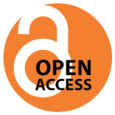The Role of PI3K/AKT Signalling Pathway in Cancer Stem Cells: Emerging Therapeutic Targets and Resistance Mechanisms
PI3K/AKT Signalling Pathway in Cancer Stem Cells: Emerging Therapeutic Targets
DOI:
https://doi.org/10.54393/fbt.v5i3.180Keywords:
Cancer Stem Cells, PI3K/AKT Signaling, Therapeutic Resistance, Tumor Recurrence, Epithelial-Mesenchymal Transition, Immune EvasionAbstract
Cancer stem cells (CSCs) are an insignificant, however enormous population of tumor cells that display capacities of self-renewal, differentiation, and tumor initiation, consequently being the core feature in cancer progression, recurrence, and drug resistance. The phosphoinositide 3-kinase/protein kinase B (PI3K/AKT) is one of the most critical signalling cascades regulating CSCs and controlling their stemness, survival, evasion of the immune system under stressful conditions, as well as metabolic reprogramming. This review provides an overview of the morphological features and functional aspects of the PI3K/AKT immune cascade and pathway, and how it essentially connects with both upstream and downstream effectors in CSC biology. The cross-communication of PI3K/AKT with other pathways, e.g., Wnt, Notch, and Hedgehog, is elaborated to emphasize the redundancy of the networks facilitating CSC maintenance and drug resistance. Additionally, we provide an in-depth scrutiny of the processes through which PI3K/AKT signalling leads to CSC resistance to chemotherapy, radiotherapy, and targeted therapy, as well as their plasticity, metastasis, and immune escape mechanisms. Current and future therapeutic approaches targeting the PI3K/AKT axis, such as small molecule inhibitors, combination therapy, and drug delivery nanotechnology, are also discussed. Finally, we present clinical issues and prospects for improving CSC-based therapy by using PI3K/AKT blockade to eliminate resistance and induce protracted, long-lasting cancer remission.
References
Rascio F, Spadaccino F, Rocchetti MT, Castellano G, Stallone G, Netti GS et al. The Pathogenic Role of PI3K/AKT Pathway in Cancer Onset and Drug Resistance: An Updated Review. Cancers. 2021 Aug; 13(16): 3949. doi: 10.3390/cancers13163949.
Xue C, Li G, Lu J, Li L. Crosstalk Between Circrnas and the PI3K/AKT Signaling Pathway in Cancer Progression. Signal Transduction and Targeted Therapy. 2021 Nov; 6(1): 400. doi: 10.1038/s41392-021-00788-w.
Su J, Song Y, Zhu Z, Huang X, Fan J, Qiao J et al. Cell–cell Communication: New Insights and Clinical Implications. Signal Transduction and Targeted Therapy. 2024 Aug; 9(1): 196. doi: 10.1038/s41392-024-01888-z.
Ahmad MZ, Ahmad J, Alasmary MY, Abdel-Wahab BA, Warsi MH, Haque A et al. Emerging Advances in Cationic Liposomal Cancer Nanovaccines: Opportunities and Challenges. Immunotherapy. 2021 Apr; 13(6): 491-507. doi: 10.2217/imt-2020-0258.
Cai T, Liu H, Zhang S, Hu J, Zhang L. Delivery of Nano-vaccine Towards Lymphoid Organs: Recent Strategies in Enhancing Cancer Immunotherapy. Journal of Nano-biotechnology. 2021 Nov; 19(1): 389. doi: 10.1186/s12951-021-01146-2.
Emery J, Butow P, Lai-Kwon J, Nekhlyudov L, Rynderman M, Jefford M. Management of Common Clinical Problems Experienced by Survivors of Cancer. The Lancet. 2022 Apr; 399(10334): 1537-50. doi: 10.1016/S0140-6736(22)00242-2.
Hervieu C, Christou N, Battu S, Mathonnet M. The Role of Cancer Stem Cells in Colorectal Cancer: From the Basics to Novel Clinical Trials. Cancers. 2021 Mar; 13(5): 1092. doi: 10.3390/cancers13051092.
Lim JR, Mouawad J, Gorton OK, Bubb WA, Kwan AH. Cancer Stem Cell Characteristics and Their Potential as Therapeutic Targets. Medical Oncology. 2021 Jul; 38(7): 76. doi: 10.1007/s12032-021-01524-8.
Da Silva PP, Da Silva FA, Rodrigues CA, Souza LP, de Lima EM, Pereira MH et al. Geographical Information System and Spatial–Temporal Statistics for Monitoring Infectious Agents in Hospital: A Model Using Klebsiella Pneumoniae Complex. Antimicrobial Resistance and Infection Control. 2021 Jun; 10(1): 92. doi: 10.1186/s13756-021-00944-5.
Kranz LM, Diken M, Haas H, Kreiter S, Loquai C, Reuter KC et al. Systemic RNA Delivery to Dendritic Cells Exploits Antiviral Defence for Cancer Immunotherapy. Nature. 2016 Jun; 534(7607): 396-401. doi: 10.1038/nature18300.
Tasnim N, De la Vega L, Anil Kumar S, Abelseth L, Alonzo M, Amereh M et al. 3D Bioprinting Stem Cell Derived Tissues. Cellular and Molecular Bioengineering. 2018 Aug; 11(4): 219-40. doi: 10.1007/s12195-018-0530-2.
Ali N, Hanif N, Khan HA, Waseem MA, Saeed A, Zakir S et al. Deep Learning and Artificial Intelligence for Drug Discovery, Application, Challenge, and Future Perspectives. Discover Applied Sciences. 2025 May; 7(6): 533. doi: 10.1007/s42452-025-06991-6.
Naveed M, Ali A, Aziz T, Ali N, Rehman HM, Khan AA et al. Computational Design of a Glycosylated Multi-Epitope Vaccine Against Hasv-1 And Hasv-2 Astrovirus for Acute Gastroenteritis. Scientific Reports. 2025 Apr; 15(1): 13954. doi: 10.1038/s41598-025-96989-2.
Di Fiore R, Suleiman S, Drago-Ferrante R, Subbannayya Y, Pentimalli F, Giordano A et al. Cancer Stem Cells and Their Possible Implications in Cervical Cancer: A Short Review. International Journal of Molecular Sciences. 2022 May; 23(9): 5167. doi: 10.3390/ijms23095167.
Muller L, Fauvet F, Chassot C, Angileri F, Coutant A, Dégletagne C et al. EMT-Driven Plasticity Prospectively Increases Cell–Cell Variability to Promote Therapeutic Adaptation in Breast Cancer. Cancer Cell International. 2025 Feb; 25(1): 32. doi: 10.1186/s12935-025-03637-w.
Brown MS, Abdollahi B, Wilkins OM, Lu H, Chakraborty P, Ognjenovic NB et al. Phenotypic Heterogeneity Driven by Plasticity of the Intermediate EMT State Governs Disease Progression and Metastasis in Breast Cancer. Science Advances. 2022 Aug; 8(31): eabj8002. doi: 10.1126/sciadv.abj8002.
Fulford LG, Reis-Filho JS, Ryder K, Jones C, Gillett CE, Hanby A et al. Basal-Like Grade III Invasive Ductal Carcinoma of the Breast: Patterns of Metastasis and Long-Term Survival. Breast Cancer Research. 2007 Jan; 9(1): R4. doi: 10.1186/bcr1636.
Gurunathan S, Thangaraj P, Wang L, Cao Q, Kim JH. Nanovaccines: An Effective Therapeutic Approach for Cancer Therapy. Biomedicine and Pharmacotherapy. 2024 Jan; 170: 115992. doi: 10.1016/j.biopha.2023.115992.
Ganesan K, Du B, Chen J. Effects and Mechanisms of Dietary Bioactive Compounds on Breast Cancer Prevention. Pharmacological Research. 2022 Apr; 178: 105974. doi: 10.1016/j.phrs.2021.105974.
Gao L, Meng F, Yang Z, Lafuente-Merchan M, Fernández LM, Cao Y et al. Nano-Drug Delivery System for the Treatment of Multidrug-Resistant Breast Cancer: Current Status and Future Perspectives. Biomedicine and Pharmacotherapy. 2024 Oct; 179: 117327. doi: 10.1016/j.biopha.2024.117327.
Wang T, Narayanaswamy R, Ren H, Torchilin VP. Combination Therapy Targeting Both Cancer Stem-Like Cells and Bulk Tumor Cells for Improved Efficacy of Breast Cancer Treatment. Cancer Biology and Therapy. 2016 Jun; 17(6): 698-707. doi: 10.1080/15384047.2016.1190488.
Montazersaheb P, Pishgahzadeh E, Jahani VB, Farahzadi R, Montazersaheb S. Magnetic Nanoparticle-Based Hyperthermia: A Prospect in Cancer Stem Cell Tracking and Therapy. Life Sciences. 2023 Jun; 323: 121714. doi: 10.1016/j.lfs.2023.121714.
Chen H, Cheng H, Liang X, Cai S, Liu G. Immunosuppression Reversal Nanovaccines Substituting Dendritic Cells for Personalized Cancer Immunotherapy. Frontiers in Immunology. 2022 Jun; 13: 934259. doi: 10.3389/fimmu.2022.934259.
Ahmad A, Imran M, Sharma N. Precision Nanotoxicology in Drug Development: Current Trends and Challenges in Safety and Toxicity Implications of Customized Multifunctional Nanocarriers for Drug-Delivery Applications. Pharmaceutics. 2022 Nov; 14(11): 2463. doi: 10.3390/pharmaceutics14112463.
He Y, Sun MM, Zhang GG, Yang J, Chen KS, Xu WW et al. Targeting PI3K/Akt Signal Transduction for Cancer Therapy. Signal Transduction and Targeted Therapy. 2021 Dec; 6(1): 425. doi: 10.1038/s41392-021-00828-5.
Peng Y, Wang Y, Zhou C, Mei W, Zeng C. PI3K/Akt/mTOR Pathway and Its Role in Cancer Therapeutics: Are We Making Headway? Frontiers in Oncology. 2022 Mar; 12: 819128. doi: 10.3389/fonc.2022.819128.
Yang J, Nie J, Ma X, Wei Y, Peng Y, Wei X. Targeting PI3K in Cancer: Mechanisms and Advances in Clinical Trials. Molecular Cancer. 2019 Feb; 18(1): 26. doi: 10.1186/s12943-019-0954-x.
Downloads
Published
How to Cite
Issue
Section
License
Copyright (c) 2025 Futuristic Biotechnology

This work is licensed under a Creative Commons Attribution 4.0 International License.
This is an open-access journal and all the published articles / items are distributed under the terms of the Creative Commons Attribution License, which permits unrestricted use, distribution, and reproduction in any medium, provided the original author and source are credited. For comments editor@fbtjournal.com












